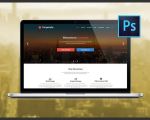- 1-factors-influencing-website-designer-cost
- 2-common-pricing-models-for-website-designers
- 3-real-world-examples-of-website-design-costs
- 4-how-to-budget-effectively-for-website-design
- 5-benefits-of-investing-in-professional-website-design
- 6-where-to-find-quality-website-design-services
1. Factors Influencing Website Designer Cost
When considering how much does a website designer cost, several factors come into play that affect the final price. These include the complexity of the website, the number of pages, required features like e-commerce or booking systems, and the designer’s expertise level.
For instance, a simple informational website with a few pages costs significantly less than a custom-built online store with integrated payment gateways. Additionally, designers with specialized skills or strong portfolios tend to charge premium rates, reflecting their experience and quality of work.
1.1 Customization and Technical Requirements
The need for custom graphics, animations, or backend development increases cost. If your project requires search engine optimization ( SEO) or ongoing maintenance, these will also impact pricing.
2. Common Pricing Models for Website Designers
Website designers typically use several pricing models. The most common are hourly rates, fixed project fees, and value-based pricing.
Hourly rates range from $50 to $150 or more depending on location and expertise. Fixed fees provide a set price for defined deliverables, offering clarity for budget-conscious clients. Value-based pricing is less common but aligns the fee with the project’s impact or business value.
2.1 Choosing the Right Pricing Model for Your Project
Selecting a pricing model depends on your project scope and preferences. For small, clearly defined websites, fixed fees are often best. For evolving projects or those requiring frequent changes, hourly billing might be more suitable.
3. Real-World Examples of Website Design Costs
Consider the case of Mark, a startup founder, who paid $3,000 for a professional website featuring basic company info and contact forms. In contrast, Emma, an online retailer, invested $12,000 for a fully customized e-commerce site with inventory management and marketing tools.
These examples illustrate how different needs and features influence pricing and highlight the importance of aligning your budget with your business goals.
4. How to Budget Effectively for Website Design
To manage costs, start by clearly defining your website goals and must-have features. Communicate these expectations early with your designer to avoid scope creep. Research multiple designers or agencies to compare pricing and services.
Also, consider ongoing costs such as hosting, domain registration, and potential future updates. Building a contingency fund can help handle unexpected expenses.
4.1 Avoiding Common Budget Pitfalls
Beware of quotes that seem too low—they often exclude essential services or result in lower quality. Conversely, high prices don’t always guarantee better results, so evaluate portfolio and reviews carefully.
5. Benefits of Investing in Professional Website Design
Though cost is important, investing in a professional website designer often pays off through better user experience, improved branding, and higher conversion rates. A well-designed website supports your business growth and establishes credibility online.
Quality design can also reduce maintenance costs over time by preventing technical issues and ensuring scalability.
6. Where to Find Quality Website Design Services
For those asking how much does a website designer cost and looking for trusted services, SitePoint 24 offers a curated selection of experienced designers and agencies. Their platform helps you find professionals who match your project needs and budget.
Partnering with reputable providers like SitePoint 24 ensures your investment leads to a website that truly supports your business goals.








